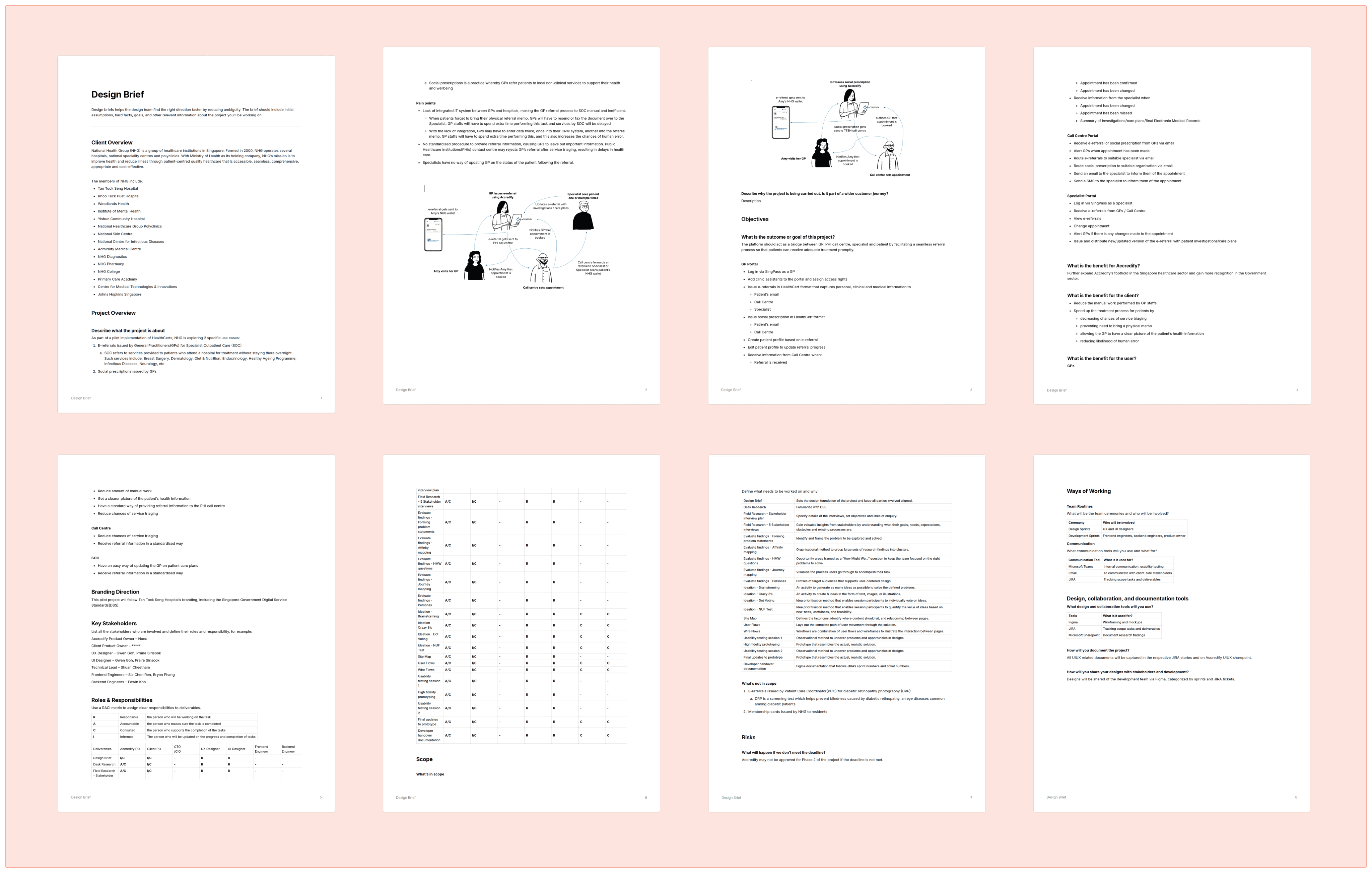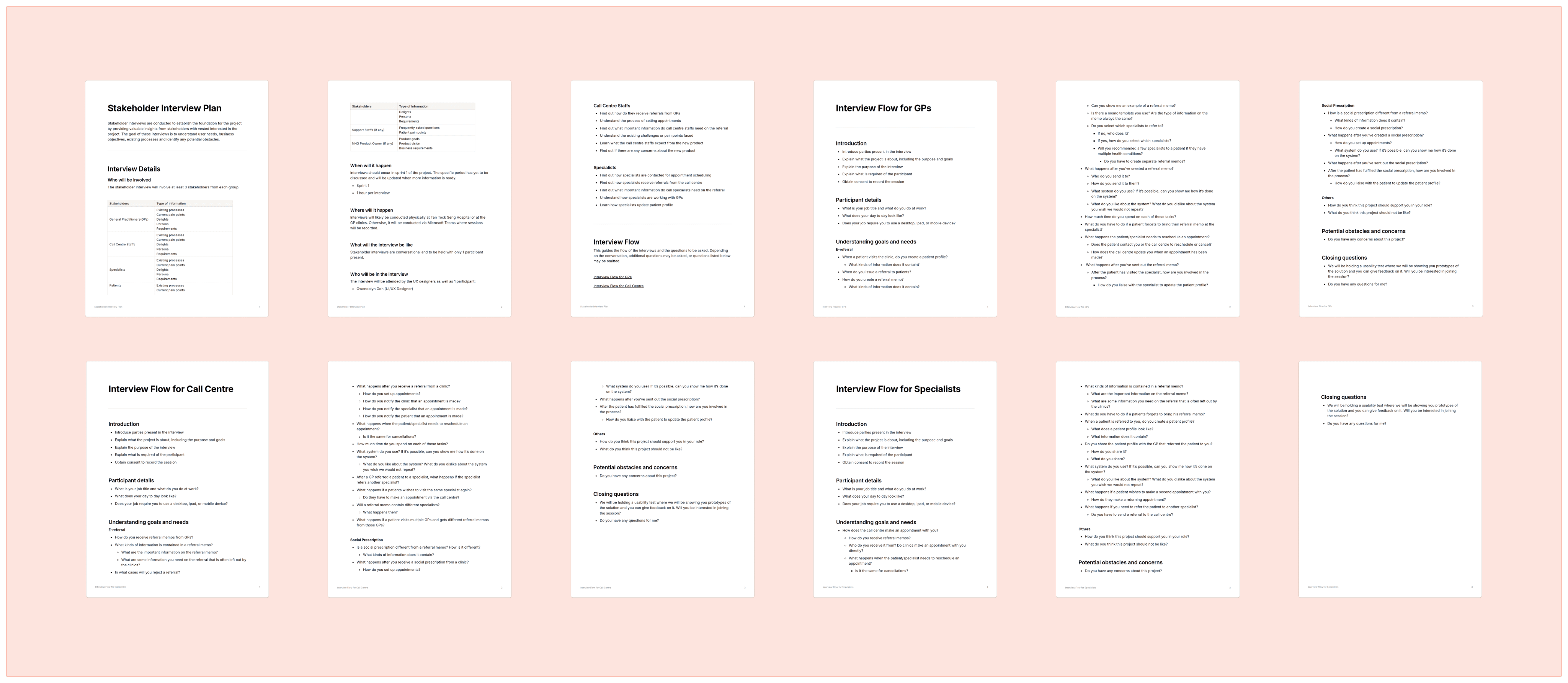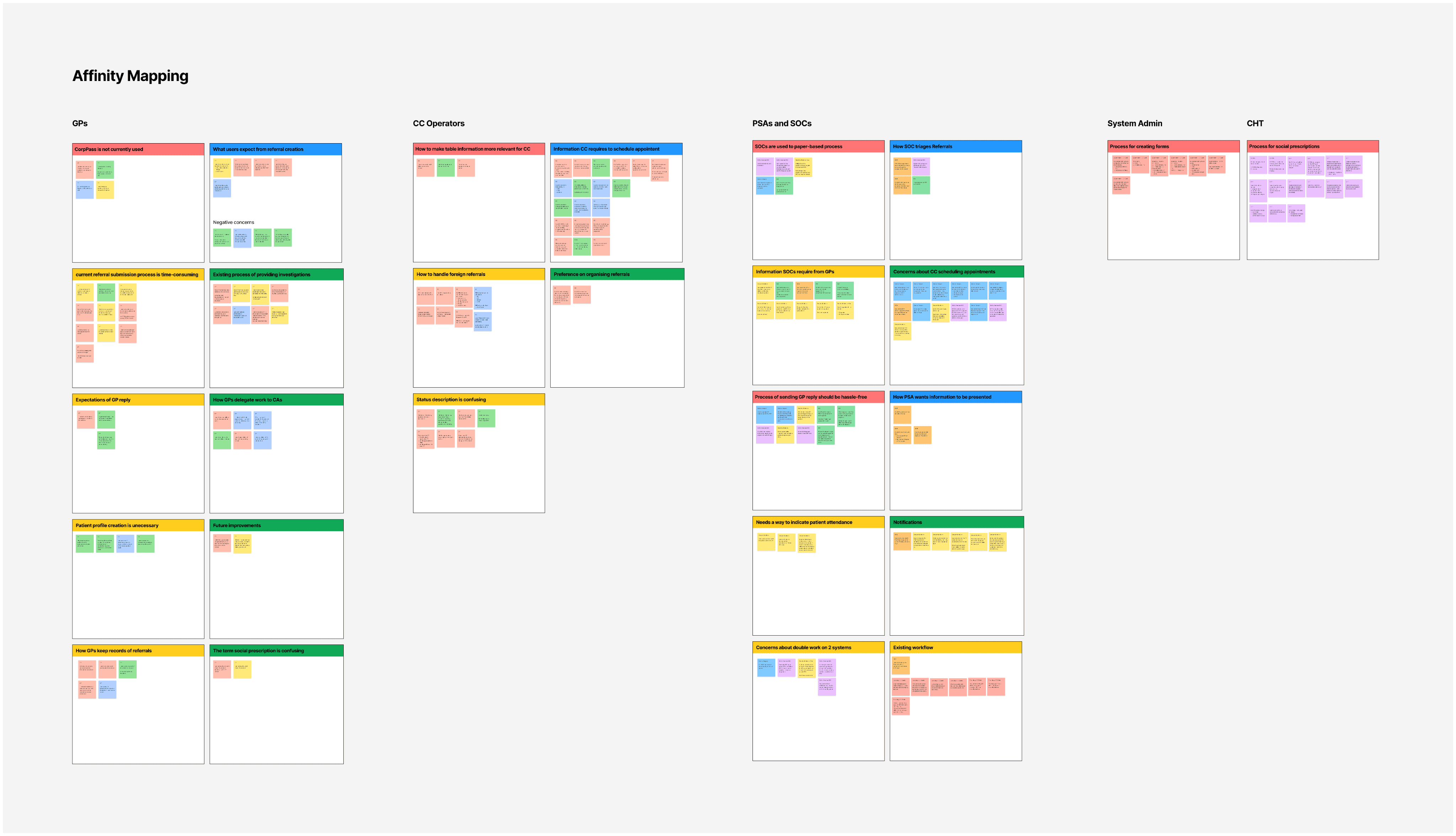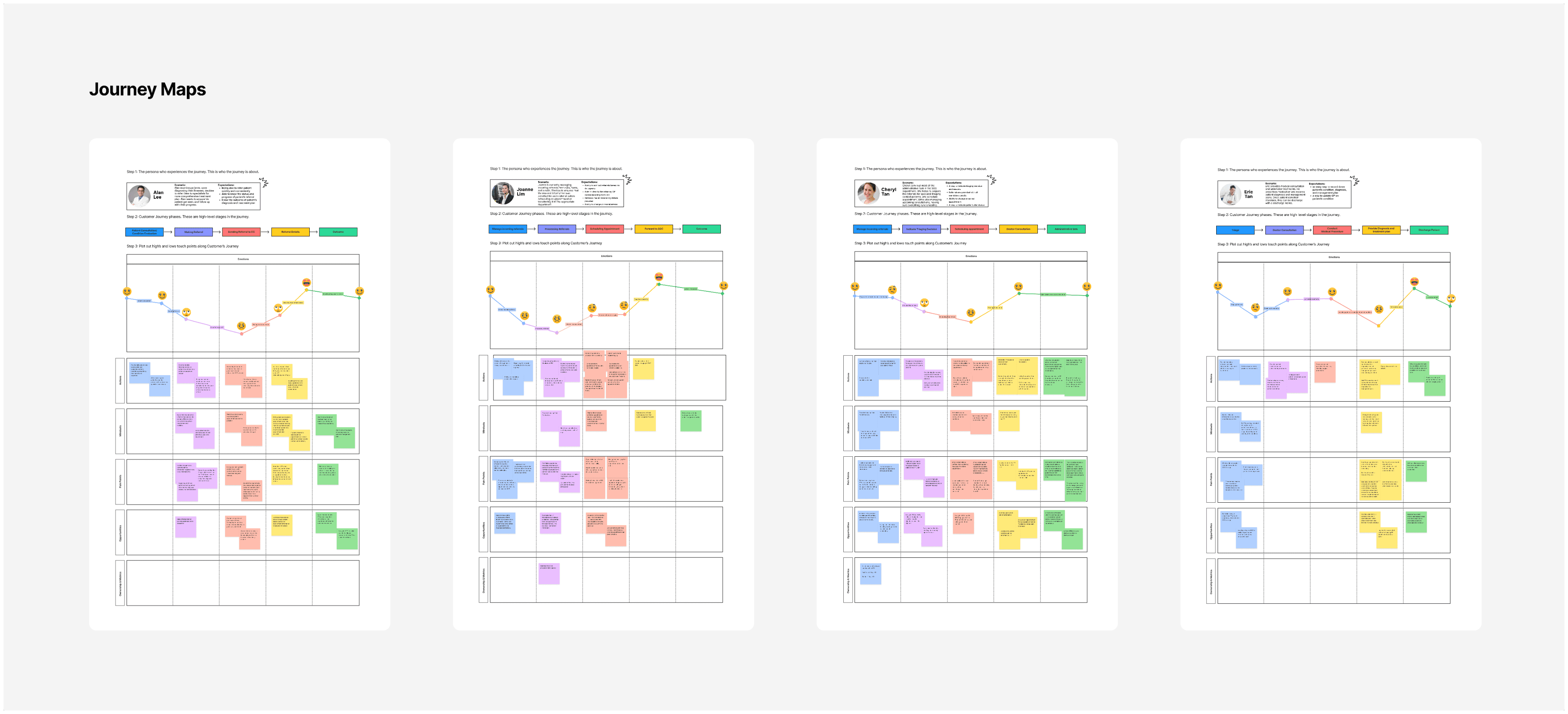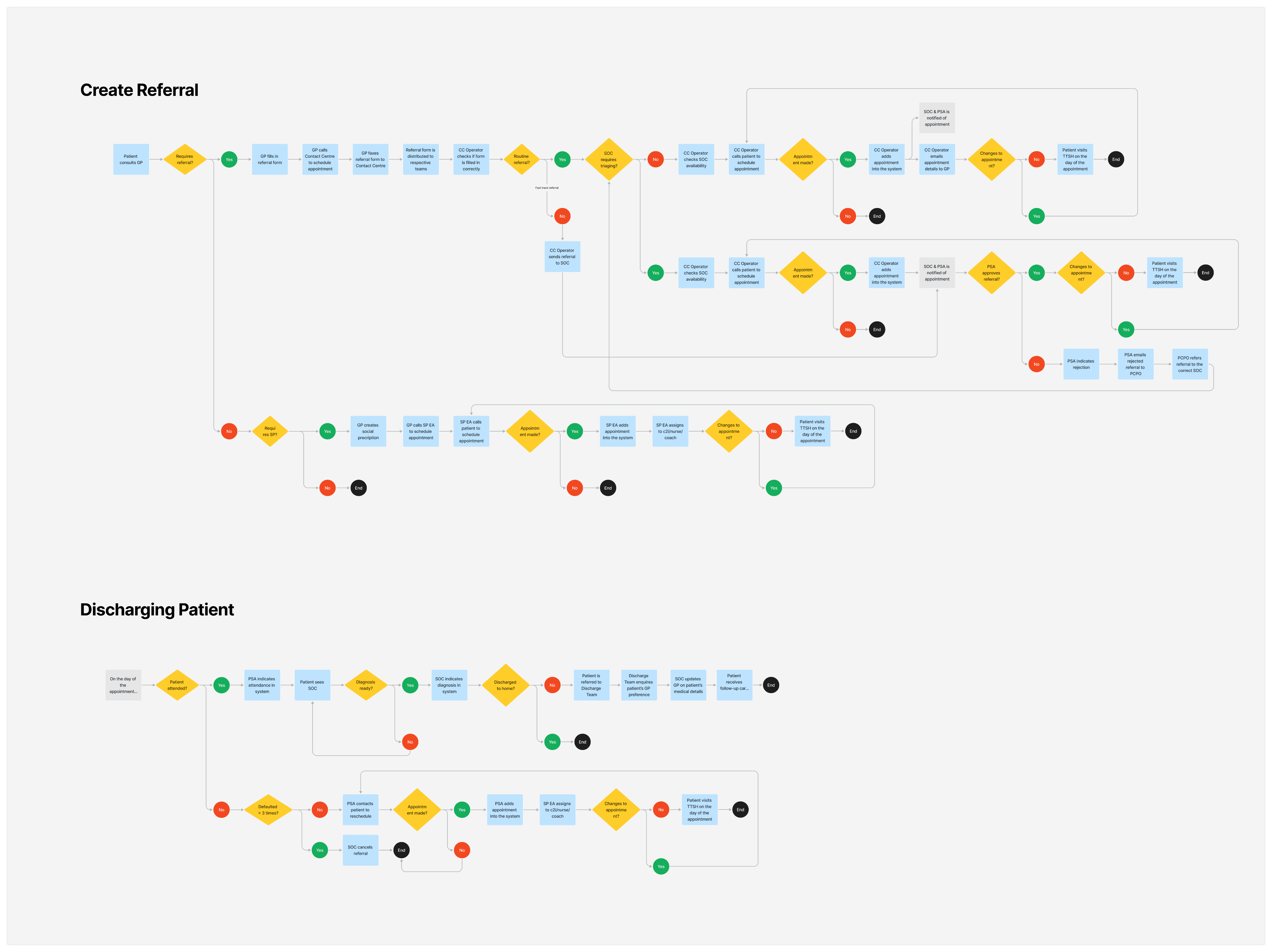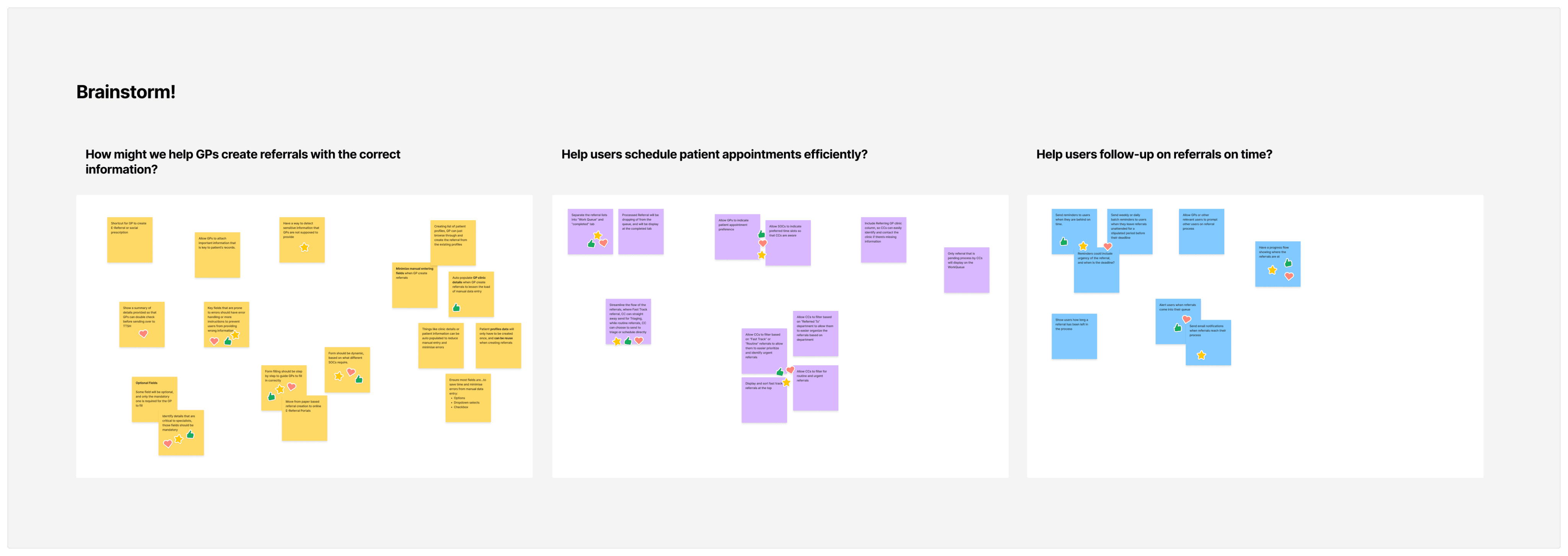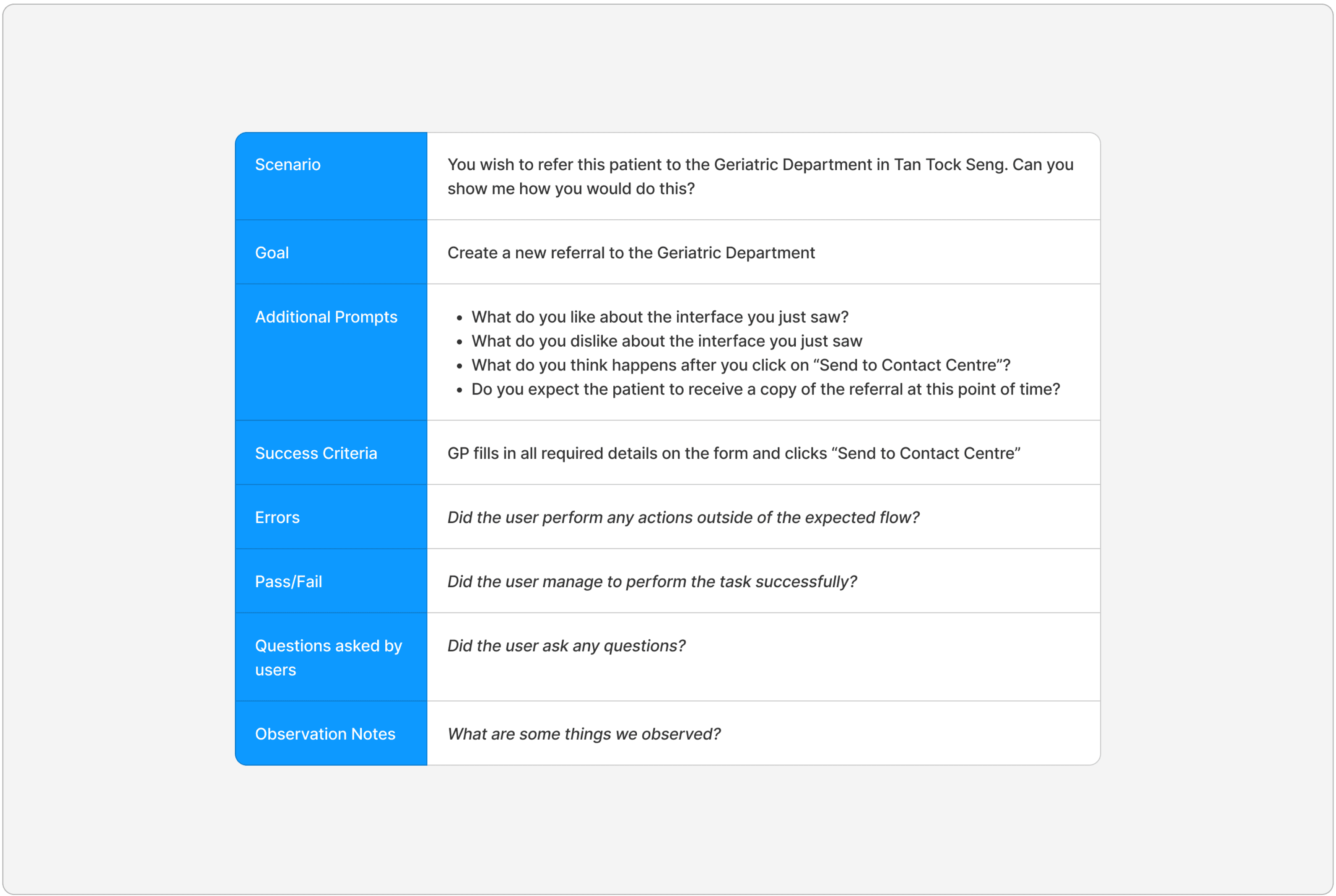Patient Referral
Improving patient care with an intuitive patient referral platform designed for General Practitioners and healthcare providers at Tan Tock Seng Hospital.
Client
Tan Tock Seng Hospital
Duration
3 months
My role
User research
Wireframing
Prototyping
Usability testing
Client management
Improving healthcare access with an optimised referral process
Context
Tan Tock Seng Hospital is one of the largest hospitals in Singapore. The hospital works closely with primary and community care partners to provide quality health care services to the population.
Challenge
Receiving thousands of referral from General Practitioners every month, the hospital struggled to process these referrals efficiently, leading to delays in patient treatment:
Physical referral forms are easily misplaced
General Practitioners were not providing enough patient details
Lack of visibility into the referral flow
Starting off with a design brief
To start every one off on the right track, I created a design brief that documents the initial assumptions, hard facts, goals and relevant information about this project.
Interviewing users
To understand the existing process and challenges faced by each user group, we interviewed over 25 users, including General Practitioners, Clinic Assistants, Call Centre Operators, Patient Service Associates and Specialists.
I created a stakeholder interview plan documenting the research goals for each user group and planned the questions accordingly.
Insights from the interviews
General Practitioners & Clinic Assistants:
01
Lack visibility into the referral process to respond to patients
02
Lacks information on patient diagnosis for follow-up
03
Finds it difficult to liaise on patient appointment via calls and fax
Call Centre Operators:
01
Frequent of back and forth due to incorrect referral form filling
02
Needs an easy way to organise referrals by urgency
03
Difficult to reschedule appointments as ideal time is unclear
Specialists & Assistants
01
Concerns over incorrect appointment scheduling by Call Centre
02
Form requirements differ significantly across specialist clinics
03
Insufficient patient details provided by General Practitioners
Empathising with users
To better empathise with users, we crafted personas of our target audience and created journey maps to visualise the process that users go through to accomplish their goals.
Understanding the referral process
From the interviews, we realised that the referral workflow is a complex process involving many different parties. To visualise the existing process and identify opportunities for improvement, we created a few process flows detailing the series of steps users will take to complete a referral.
Framing the challenge
Next, we proceeded to frame HMW statements to help us focus on the right problems to solve.
How might we…
Help GPs create referrals with the correct information?
Help users schedule patient appointments efficiently?
Help users follow-up on referrals on time?
Brainstorming, Dot Voting & Crazy 8’s
We held a brainstorming session where participants were given time to generate as many ideas as they could, focusing on quantity instead of quality.
To further encourage idea generation, we did a Crazy 8’s exercise where participants are given 8 minutes to sketch 8 ideas each.
Prototyping & validating solution
After understanding the problem space, we proceeded to design the high fidelity mockups and conduct usability testing on them. We conducted 1-1 usability testings with over 20 users from 5 different user groups.
Insights from the usability testing sessions
General Practitioners & Clinic Assistants:
01
Too many mandatory fields, GPs may lack required information
02
Referral status is helpful, but status description can be clearer
03
Tendency to assign referrals as fast track for faster appointments.
Call Centre Operators:
01
To avoid double work, needs to identify who is handling the referrals
02
Status description should be similar to the terms they are using
03
Needs an option to send routine referrals for triaging
Specialists & Assistants
01
Requires clearer indication on when the referral is created
02
Recommended appointment period is very useful
03
Needs a way to edit or cancel appointment if patient does not attend
The final solution
For General Practitioners & Clinic Assistants
A step by step referral creation flow that guides General Practitioners on the correct information to provide while minimising the amount of data entry with auto fill.
For Contact Centre Operators
Clear prioritisation of task load with the flexibility to send referrals for triaging. With Specialists’ indications of suggested appointment period, Contact Centre Operators can schedule appointments more accurately.
For Specialists & Assistants
A streamlined process of updating patient attendance and medical records. General Practitioners are kept updated automatically without the need for back and forth emails.
For System Administrators
Track and manage all referrals, view vital statistics and customise forms to meet department-specific form requirements.
Outcomes and learnings
The successful launch of the pilot project has connected over 30 clinics to 5 specialist departments at Tan Tock Seng Hospital. With the success of the pilot, the National Health Group has awarded Accredify to proceed with the next phase of the project.
A key lesson I’ve learned is the importance of starting a user roles permission matrix early. With several user roles and differing permissions, the matrix will not only assist designers in screen designs, but also facilitate a smoother handover to developers.
Overall, I am happy that the platform we’ve designed bridged the gaps between the users and facilitated the flow of crucial information to minimise delays in patient treatment.

